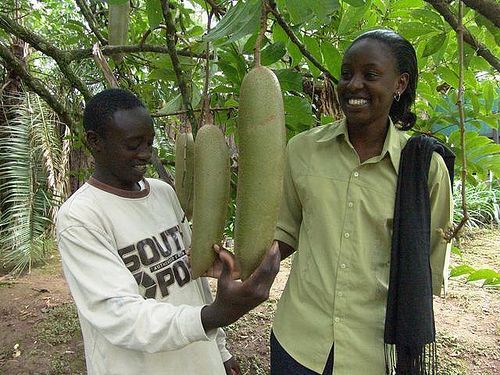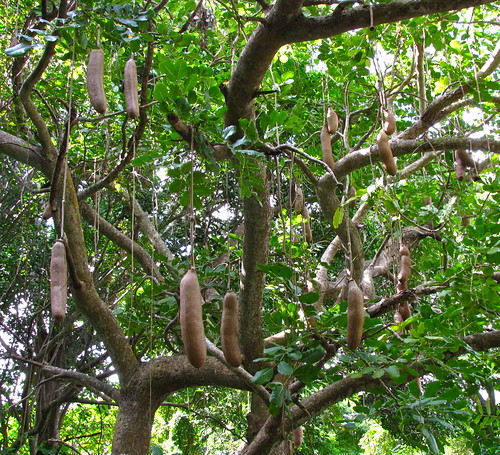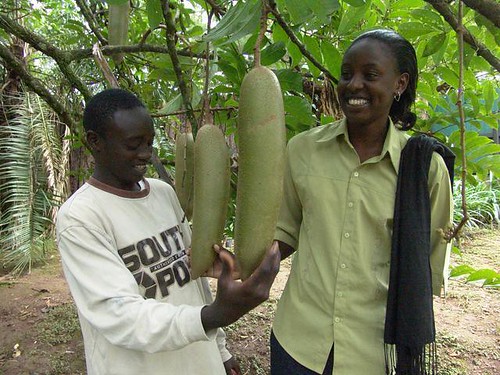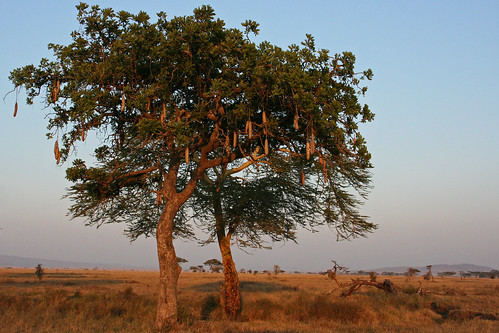
Sausage Tree – Root and Branch Review
An unusual tree with even more unusual fruit.
Key Features of the Sausage Tree
- Latin name Kigelia Africana other common name kigeli keia
- Height 30-50 feet high 12m
- Type of tree – deciduous but evergreen with adequate rainfall
- Leaves Pinnate with 3-6 pairs of lenceolate green leaflets
- Flowers Large, dark red, strongly scented, bell flowers hanging in panicles
- Fruit Pendulous grey-green sausage shaped unpalatable fruit that give the plant its common name
- Bark Rough grey-brown
- Family Bignoniaceae.
Origins and Distribution of the Sausage Tree
- Occurs throughout tropical Africa.
- Sausage tree in Arabic means “the father of kit bags” .
Uses and Commercial Attributes of the Sausage Tree
- The tree is grown as an ornamental for flowers and seed pods.
- Medicinal uses include treatment for abscesses, rheumatism and venereal disease
- Beer can be brewed from the fruit
- The many seeds are good parrot food.
- The tough wood is used to make dug out canoes
Gardeners Tips for the Sausage Tree
- Not a UK garden or outdoor plant
- Try Kew or large botanic gardens if you want to see a plant.
Other types of Sausage Tree
- The genus has only one species.
Sausage Tree comments from elsewhere
- The Sausage tree charity raises funds to advance the education and well-being of children in the Luangwa Valley, Zambia.
- Some birds are attracted to these flowers and the strong stems of each flower make ideal footholds. Their scent is most notable at night indicating their reliance on pollination by bats, which visit them for pollen and nectar.
- ‘The Sausage tree Kigelia africana is spread sparsely throughout Serengeti. It produces characteristic long (1 m), succulent, poisonous fruits that drop from the tree and release seeds as the pulp rots. The vine-like fruit stalks can be seen for months after the fruits are dropped. There is a dry bush joke that the worst place to camp is under a Sausage tree .. if the 5 kg fruits don’t crush you, then the elephants will as they come to collect the fruits. There is a widespread local belief that Sausage tree fruits, when hung in your hut, will ward-off whirlwinds.’ Serengeti plant life
Credits
Sausage tree by readerwalker CC BY-NC-SA 2.0
“Sausage tree by Boyznberry CC BY-NC 2.0 John Rono and Phoebe, inspecting the strange seeds of the sausage tree
Sausage Tree by imke.stahlmann CC BY-SA 2.0


